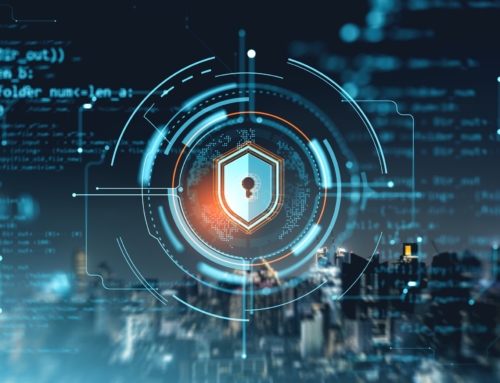Integrating Endpoint Detection and Response (EDR) Tools for Ransomware Defense
Understanding the Threat: The Evolving Landscape of Ransomware Attacks
The insidious threat of ransomware continues to evolve, causing significant challenges for businesses and industries around the globe. As we observe the changing tactics employed by cybercriminals, it becomes evident that ransomware attacks are not only becoming more sophisticated but also more frequent. These disruptions have the potential to cause extensive financial damage, loss of sensitive data, and irreversible harm to reputations. Consequently, the demand for dynamic and powerful defense mechanisms is at an all-time high. EDR tools ransomware defense strategies offer a glimmer of hope in this regard, serving as a crucial component in the cybersecurity arsenals of forward-thinking organizations.
The Role of EDR Tools in Ransomware Mitigation
Endpoint Detection and Response (EDR) tools are a class of cybersecurity solutions designed to provide comprehensive threat detection, investigation, and response capabilities. These tools play a pivotal role in the real-time monitoring and analysis of endpoint events, offering both proactive and reactive defense layers against the scourge of ransomware. EDR solutions allow us to not only detect and respond to threats but also to conduct a thorough forensic analysis post-incident, which is invaluable in bolstering our defenses. Trusted industry reports and cybersecurity experts confirm the efficacy of EDR tools in ransomware defense, underscoring their importance in any robust cybersecurity strategy.
Why Integration Matters: The Benefits of a Unified Security Posture
In the realm of cybersecurity, a unified security posture is not just a strategy—it’s a necessity. Integrating EDR tools into our existing IT infrastructure is not only strategic but essential for the seamless protection of our digital landscape. A unified approach to security ensures that no gaps are left unattended and that our collective defensive measures are greater than the sum of their parts. This holistic view of cybersecurity, backed by the streamlined operation of integrated systems, allows us to adapt rapidly to new threats. Statistical insights and expert analyses emphasize the stark contrast in outcomes between organizations with a unified security posture and those without, highlighting the significant advantages afforded by integration.
Key Features of EDR Tools in Combating Ransomware
Real-Time Monitoring and Threat Detection
At Alvaka, we understand the significance of staying ahead of potential threats. Consequently, we leverage EDR tools that offer real-time monitoring and threat detection, ensuring that your network is constantly observed for suspicious activities. These tools utilize advanced analytics to discern abnormal behavior, potentially indicative of a ransomware attack, and swiftly alert our team before any significant damage can escalate.
Automated Response Capabilities
We acknowledge the importance of an immediate response once a threat is detected. Our EDR tools come equipped with automated response capabilities that orchestrate protective actions without requiring manual intervention. This rapid response can reduce the window of opportunity for ransomware to proliferate, minimizing the impact on your operations and preserving the integrity of your data.
Behavioral Analytics to Detect Anomalies
In our fight against ransomware, we utilize the behavioral analytics feature of EDR tools to understand typical system patterns and identify deviations. By establishing a baseline of normal activity, the tools can provide a more accurate detection of ransomware attempts. This sophisticated analysis enables us to gain insights into potential threats and proactively defend against them.
Threat Hunting and Remediation Techniques
Our proactive stance includes regular threat hunting exercises using the insights provided by EDR tools. By investigating patterns and correlating events, we can uncover hidden threats that may have bypassed initial defenses. Once a threat is identified, our EDR tools are pivotal in orchestrating remediation techniques to neutralize the threat, with a focus on minimizing downtime and restoring systems to full functionality.
Data Analytics and Forensics for Post-Attack Learning
After a ransomware attack is thwarted or contained, it’s crucial to understand how it happened. The data analytics and forensics capabilities of our EDR tools ransomware defense allow us to dissect the incident, understand the attack vectors, and implement lessons learned into an improved defense strategy. This continuous improvement cycle is vital for fortifying our defenses against evolving ransomware tactics.
Continuous risk assessment to stay abreast of new ransomware variants
- Integration with other security systems for a cohesive security posture
- Scalability to grow with your organization’s increasing needs
- User and entity behavior analytics (UEBA) for deeper insight into potential internal threats
- Cloud-based storage analysis to protect your data across all platforms
At Alvaka, we believe in the power of EDR tools ransomware defense to not only react to threats but also to anticipate and neutralize them before they cause harm. As ransomware attacks become increasingly sophisticated, so too do our strategies and tools, ensuring that your business is safeguarded with the utmost vigilance and expertise.
Did you know? EDR tools use real-time monitoring and analysis to detect ransomware threats early, reducing the time attackers can remain undetected in a network.
Combining Forces: EDR Tools Ransomware Defense and a Cohesive Strategy
As we reflect on the evolving cyber threats, particularly ransomware, it’s clear that no isolated solution guarantees complete security. At Alvaka, we emphasize the synergy between cutting-edge ransomware recovery techniques and the preventative capabilities of EDR tools. Ransomware doesn’t just disrupt IT operations—it can halt a company’s entire workflow. Hence, our approach intertwines EDR tools ransomware defense with strategic planning and user education, grounding our clients in resilience and knowledge.
Futureproofing with Advanced EDR Capabilities
The integration of EDR tools into our security framework equips businesses with a formidable line of defense, offering continuous monitoring and real-time threat intelligence. Our advanced EDR tools ransomware defense extends beyond mere detection, delving into predictive analytics to thwart attacks before they manifest. The adoption of this proactive stance is paramount in securing digital assets against the onslaught of sophisticated ransomware campaigns.
Crafting a Resilient IT Ecosystem
We advocate not merely for the adoption of technologies but for fostering a robust culture of security. Every layer of an organization’s IT structure benefits from the reinforcement EDR tools provide. By weaving these safeguards into the fabric of enterprises, we not only protect against current threats but also prepare to adapt to future challenges. Our commitment to a unified security posture transcends the norm, ensuring that EDR tools ransomware defense measures are continuously evolved to meet emerging threats.
Our experiences with a myriad of clients across industries underscore the critical nature of coordinated defense strategies. We’ve seen firsthand how EDR tools serve as both the shield and sword against ransomware, providing a dynamic and responsive security environment. Our fervent mission is to secure your business continuity against the tide of cyber threats. Employing EDR tools ransomware defense is not just about withstanding attacks; it’s about advancing your operations with confidence and assurance in a digital world fraught with uncertainty. At Alvaka, we pledge to stand as your ally in this ongoing battle, reinforcing your defenses with our expertise and unwavering support.
FAQ
What are ransomware threats and how have they evolved? ▼
Ransomware threats are a type of malware designed to encrypt files on a device, making them inaccessible to users. Over time, these threats have evolved in sophistication, often bypassing traditional security measures and targeting businesses of all sizes. We’ve seen a shift from widespread, indiscriminate attacks to more focused, strategic campaigns against high-value targets.
Why is ransomware so impactful on businesses and industries? ▼
Ransomware attacks can paralyze business operations, resulting in significant financial losses and damage to reputation. Industries like healthcare, finance, and government are particularly vulnerable, as they hold sensitive data and rely heavily on uptime. Therefore, a successful ransomware attack on such entities not only disrupts services but also compromises data integrity and user privacy.
What are EDR tools and why are they important in fighting ransomware? ▼
EDR (Endpoint Detection and Response) tools are advanced cybersecurity solutions that monitor endpoint and network events to detect and respond to threats. They are critical in the fight against ransomware because they can identify suspicious activities, limit the spread of an attack, and assist in recovery efforts by providing detailed forensic insights.
How do EDR tools provide proactive and reactive defenses against ransomware? ▼
EDR tools supply proactive defense by continuously monitoring endpoints for signs of malicious activity and using behavior-based analytics to stop threats before they execute. Reactively, they facilitate incident response by enabling us to investigate, contain, and remediate threats quickly, thereby minimizing the impact of a ransomware attack.
Can you cite some trusted sources that validate the effectiveness of EDR tools? ▼
Industry reports from cybersecurity authorities like Gartner, Forrester, and MITRE consistently acknowledge the effectiveness of EDR tools. Their research highlights how EDR solutions significantly improve the detection and response capabilities of organizations against advanced threats, including ransomware.
Why is a unified security posture essential for modern businesses? ▼
A unified security posture streamlines the cohesiveness of security protocols and simplifies the management of cyber defenses. Consequently, this collective strategy enhances overall security, as it ensures that all tools and processes work in concert to detect and mitigate threats effectively and efficiently.
What are the benefits of integrating EDR tools into an existing IT infrastructure? ▼
Integrating EDR tools into our existing IT infrastructure offers several benefits, such as improved threat visibility, enriched incident context for better decision-making, enhanced automation for quicker response times, and reduced risk of security gaps that could potentially be exploited by ransomware attackers.
Which features are essential in EDR tools for combating ransomware? ▼
Key features of EDR tools for combating ransomware include real-time monitoring, threat intelligence, behavioral analytics, automated response capabilities, and comprehensive forensic tools. These functionalities enable us to effectively prevent, detect, and respond to ransomware threats.
Are there any statistical insights that support the effectiveness of EDR integration? ▼
Yes, numerous industry studies and reports provide statistical insights that underscore the value of EDR tool integration. For example, surveys conducted by cybersecurity firms reveal that organizations implementing EDR solutions see a significant reduction in the time to detect and respond to threats, leading to a lower overall risk of data breaches and security incidents.
How does actively maintaining a robust EDR solution affect overall cybersecurity? ▼
Actively maintaining a robust EDR solution leads to continuous improvement in threat detection capabilities and ensures that defenses evolve with the changing threat landscape. This vigilance contributes to a stronger cybersecurity posture, enabling us to anticipate and neutralize advanced threats more effectively.








 Smoke testing is a term used to describe the testing process for servers after patches are applied.
Smoke testing is a term used to describe the testing process for servers after patches are applied.  This is a basic cost calculator for you to compute your typical monthly cost for patching your servers, PCs, laptops, tablets and associated application software. It also forms the basis for you to begin calculating your Return on Investment for software patching, or for comparison with alternatives to the manual process of patching operating systems and application software—such as Patch Management as a Service, also known as Vulnerability Management as a Service.
This is a basic cost calculator for you to compute your typical monthly cost for patching your servers, PCs, laptops, tablets and associated application software. It also forms the basis for you to begin calculating your Return on Investment for software patching, or for comparison with alternatives to the manual process of patching operating systems and application software—such as Patch Management as a Service, also known as Vulnerability Management as a Service.